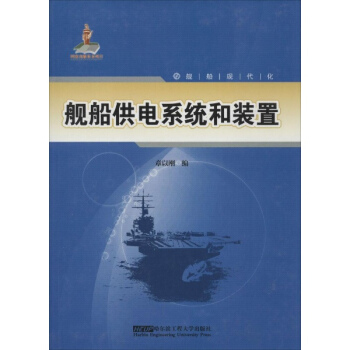

具体描述
內容簡介
《摩擦學原理(第5版)》反映瞭摩擦學研究進展以及作者和同事們從事該領域研究的成果,係統地闡述摩擦學的基本原理與應用,全麵反映現代摩擦學的研究狀況和發展趨勢。 全書共22章,由潤滑理論與潤滑設計、摩擦磨損機理與控製、應用摩擦學等三部分組成。除摩擦學傳統內容外,還論述瞭摩擦學與相關學科交叉而形成的研究領域。本書針對工程實際中各種摩擦學現象,著重闡述在摩擦過程中的變化規律和特徵,進而介紹基本理論和分析計算方法以及實驗測試技術,並說明它們在工程中的實際應用。 《摩擦學原理(第5版)》可作為機械設計與理論專業的研究生教材和高等院校機械工程各類專業師生的教學參考書,亦可供從事機械設計和研究的工程技術人員參考。
目錄
Part OneLubrication Theory and Lubrication Design
Chapter 1Properties of lubrication film
1.1Lubrication states
1.2Density of lubricants
1.3Viscosity of fluids
1.4Non�睳ewtonian properties and rheological model
1.5Lubricant wettability
1.6Measurement and exchange of viscosity
References
Chapter 2Basic theory of hydrodynamic lubrication
2.1Reynolds equation
2.2Hydrodynamic lubrication
2.3Basic elasticity theory of contact problems
2.4Elastohydrodynamic lubrication (inlet analysis)
2.5Grease lubrication
2.6Elastohydrodynamic lubrication state diagrams
References
Chapter 3Numerical methods of lubrication calculation
3.1Numerical solutions of Reynolds equation
3.2Numerical solutions of energy equation
3.3Numerical solutions of elastohydrodynamic lubrication
3.4Multi�瞘rid level method used in lubrication problems
References
Chapter 4Lubrication design of typical mechanical elements
4.1Slider and thrust bearing
4.2Journal bearing
4.3Hydrostatic bearing
4.4Squeezing bearing
4.5Dynamic bearing
4.6Gas bearing
4.7Rolling contaet bearing
4.8Gear lubrication
4.9Cam lubrication
References
Chapter 5Lubrication of special fluid medias
5.1Magneto fluid lubrication
5.2Micro�瞤olar fluid lubrication
5.3Liquid crystal lubrication
5.4Double electric layer effect in water thin film lubrication
5.5Emulsion lubrication
References
Chapter 6Transformation of lubrication states and nano thin film lubrication
6.1Transformation of lubrication states
6.2Nano film lubrication of liquid
6.3Numerical analysis of thin film lubrication
6.4Nano film lubrication of gas
References
Chapter 7Boundary lubrication and additives
7.1Types of boundary lubrication
7.2Theory of boundary lubrication
7.3Additives of lubricant
References
Chapter 8Lubrication failure and mixed lubrication
8.1Influence of roughness and material visco�瞖lastic property on lubrication
failure
8.2Influence of fluid limiting shear stress on lubrication failure
8.3Influence of temperature on lubrication failure
8.4Mixed lubrication state
References
Part TwoFriction and Wear Mechanisms and Friction Control
Chapter 9Surface topography and surface contacts
9.1Parameters of surface topography
9.2Statistic parameters of surface topography
9.3Rough surface contacts
References
Chapter 10Soliding friction and its applications
10.1Basic characteristics of friction
10.2Macro friction theory
10.3Micro friction theory
10.4Sliding friction
10.5Other friction problems and friction control
References
Chapter 11Fretting friction and its applications
11.1Development and classification of fretting tribology
11.2Theory of fretting friction
11.3Approches of improving fretting performance
11.4Researches on the applications of fretting tribology
References
Chapter 12Rolling friction and its applications
12.1Basic theories of rolling friction
12.2Wheel�瞨ail rolling friction and thermal analysis
12.3Application of rolling friction theory in design of lunar rover
vehicle
References
Chapter 13Wear characteristics and mechanisms
13.1Wear classification
13.2Abrasive wear
13.3Adhesive wear
13.4Fatigue wear
13.5Corrosion wear
References
Chapter 14Macro wear laws and wear theories
14.1Materials of friction pair
14.2Curves of wear processes
14.3Surface quality and wear
14.4Adhesive wear theory
14.5Energy wear theory
14.6Spalling theory and fatigue wear theory
14.7Wear calculation
References
Chapter 15Anti�瞱ear designs and surface coatings
15.1Choice of lubricants and additives
15.2Principles of friction pair material choice
15.3Surface coatings
15.4Measurement of coating properties
References
Chapter 16Tribological experiments and state detection
16.1Methods and equipments of tribological experiments
16.2Measurement of wear
16.3State analysis of friction surface
16.4Detection of wear states
16.5Analysis of wear failure
References
Part ThreeApplied Tribology
Chapter 17Micro tribology
17.1Micro friction
17.2Micro contact and adhesive phenomena
17.3Micro wear
17.4Molecular film and boundary lubrication
References
Chapter 18Metal forming tribology
18.1Mechanics basics in forming technology
18.2Forge tribology
18.3Drawing tribology
18.4Milling tribology
18.5Cutting tribology
References
Chapter 19Biological tribology
19.1Fundamental of mechanics on biological soft tissue
19.2Characteristics of liquid lubricant of joints
19.3Men and animal joint lubrication
19.4Friction and wear of joint
19.5Study on other biological tribology
References
Chapter 20Space tribology
20.1Space machinery and features of space tribology
20.2Analysis of space tribological properties
20.3Space lubricants
20.4Features of space lubrication
20.5Accelerating life tests and equipments
References
Chapter 21Ocean tribology
21.1Ocean enriro ment and ocean tribology characteristics
21.2Systems and equipments in ocean tribology
21.3Tribology characteristics of ocean materials
21.4Derelopment trend of ocean tribology
References
Chapter 22MEMS tribology
22.1Tribological problems in MEMS
22.2Friction analysis of MEMS
22.3Study on micro�瞞otor friction
22.4Wear analysis of MEMS
References
Chinese�睧nglish List and Index
精彩書摘
第1篇潤滑理論與潤滑設計
第1章潤滑膜特性
1.1潤滑狀態
潤滑的目的是在相互摩擦錶麵之間形成具有法嚮承載能力而切嚮剪切強度低的穩定的潤滑膜,用它來減少摩擦阻力和降低材料磨損。在現代工業中,用作潤滑劑的流體種類繁多,除瞭最常用的潤滑油和潤滑脂之外,空氣或氣體潤滑現在已相當普遍,用水或其他工業流體作為潤滑劑也日益廣泛,例如,在核反應堆裏采用液態金屬鈉潤滑。在某些場閤也可以使用固體潤滑劑,例如石墨、二硫化鉬或聚四氟乙烯(PTFE)等。所以,潤滑膜可以是液體或氣體組成的流體膜,也可以是固體膜。根據潤滑膜的形成原理和特徵,潤滑狀態可以分為: ①流體動壓潤滑; ②流體靜壓潤滑; ③彈性流體動壓潤滑(簡稱彈流潤滑); ④薄膜潤滑; ⑤邊界潤滑; ⑥乾摩擦狀態等6種基本狀態。錶1��1列齣瞭各種潤滑狀態的基本特徵。
錶1��1各種潤滑狀態的基本特徵
潤滑狀態典型膜厚潤滑膜形成方式應用
流體動壓潤滑1~100μm由摩擦錶麵的相對運動所産生的動壓效應形成流體潤滑膜中高速下的麵接觸摩擦副,如滑動軸承
液體靜壓潤滑1~100μm通過外部壓力將流體送入摩擦錶麵之間,強製形成潤滑膜各種速度下的麵接觸摩擦副,如滑動軸承、導軌等
彈性流體動壓潤滑
0.1~1μm與流體動壓潤滑相同中高速下點綫接觸摩擦副,如齒輪、滾動軸承等
薄膜潤滑10~100nm與流體動壓潤滑相同,同時受錶麵效應作用低速下高精度接觸摩擦副,如精密滾動軸承等
邊界潤滑1~50nm潤滑油分子與金屬錶麵産生物理或化學作用而形成潤滑膜低速重載條件下的高精度摩擦副
乾摩擦1~10nm錶麵氧化膜、氣體吸附膜等無潤滑或自潤滑的摩擦副
各種潤滑狀態所形成的潤滑膜厚度不同,但是單純由潤滑膜的厚度還無法準確地判斷潤滑狀態,尚需與錶麵粗糙度進行對比。圖1��1列齣潤滑膜厚度與粗糙度的數量級。隻有當潤滑膜厚度足以超過兩錶麵的粗糙峰高度時,纔有可能完全避免峰點接觸而實現全膜流體潤滑。對於實際機械中的摩擦副,常常會有幾種潤滑狀態同時存在,統稱為混閤潤滑狀態。
圖1��1潤滑膜厚度與粗糙度
根據潤滑膜厚度鑒彆潤滑狀態的方法雖然是可靠的,但由於測量上的睏難,往往不便采用。有時,也可以用摩擦因數值作為判斷各種潤滑狀態的依據。圖1��2為不同潤滑狀態對應的摩擦因數的典型值。
圖1��2摩擦因數的典型值
隨著工況參數的改變,潤滑狀態將發生轉化。圖1��3是典型的Stribeck麯綫,它錶示滑動軸承的潤滑狀態轉化過程和摩擦因數隨無量綱軸承特性數(ηU/p)的變化規律。這裏,η為潤滑油黏度; U為滑動速度; p為軸承單位麵積載荷。
圖1��3Stribeck麯綫
應當指齣: 研究各種潤滑狀態特性及其變化規律所涉及的學科各不相同,處理問題的方法也不一樣。流體潤滑包括流體動壓潤滑和流體靜壓潤滑,主要是應用黏性流體力學和傳熱學等來分析潤滑膜的承載能力及其他力學特性。在彈性流體動壓潤滑中,由於載荷集中作用,還要根據彈性力學分析接觸錶麵的變形以及潤滑劑的流變學性能。對於邊界潤滑狀態,則要從物理化學的角度研究潤滑膜的形成與破壞機理。薄膜潤滑兼有流體潤滑和邊界潤滑的特性。在乾摩擦狀態中,主要的問題是限製磨損,涉及材料科學、彈塑性力學、傳熱學、物理化學等內容。
1.2潤滑油的密度
密度是潤滑劑最常用的物理指標之一。在潤滑分析中,通常認為潤滑油是不可壓縮的,並且忽略熱膨脹的影響,因而將密度視為常量。一般以20℃時的密度作為標準。錶1��2給齣瞭部分基礎潤滑油的密度。
錶1��2部分基礎潤滑油的密度
潤滑油密度/(g/cm3)潤滑油密度/(g/cm3)
三磷酸酯0.915~0.937水溶性聚亞烷基乙二醇1.03~1.06
二苯基磷酸酯0.990非水溶聚亞烷基乙二醇0.98~1.00
三羥甲苯基磷酸酯1.161二甲基矽油0.76~0.97
羥甲苯基二苯磷酸酯1.205乙基�布諄�矽油0.95
氯化二苯基1.226~1.538苯基甲基矽油0.99~1.10
事實上,潤滑油的密度是壓力和溫度的函數。在某些條件下,例如彈性流體動壓潤滑狀態,必須考慮潤滑油的密度變化,進行變密度的潤滑分析。
潤滑油所受壓力增加時,其體積減小因而密度增加,所以密度隨壓力的變化可用壓縮係數C來錶示,即
C=1ρdρdp=VMd(M/V)dp=-1VdVdp (1��1)
式中,V為已知質量為M的潤滑油的體積。
由此可得
ρp=ρ0[1+C(p-p0)]
式中,ρ0和ρp分彆為在壓力p0和p下的密度。
對於潤滑油可取C的錶達式為
C=(7.25-lgη)×10-10
式中,黏度η的單位為mPa·s時,C的單位為m2/N。
為瞭計算方便,也常采用如下的密度與壓力關係式
ρp=ρ01+0.6p1+1.7p (1��2)
式中,p的單位為GPa。
溫度對密度的影響是由於熱膨脹造成體積增加,從而使密度減小。若潤滑油的熱膨脹係數為αT,則
ρT=ρ0[1-αT(T-T0)] (1��3)
式中,ρT為溫度T時的密度; 而ρ0為溫度T0時的密度; αT的單位為℃-1。
通常潤滑油的αT值可用兩個關係式錶示。如果黏度單位用mPa·s,當黏度低於3000mPa·s時,lgη≤3.5,則
αT=10-95lgη×10-4
而當黏度高於3000mPa·s,即lgη>3.5時,
αT=5-38lgη×10-4
1.3流體的黏度
與密度相比,潤滑劑的黏度隨溫度、壓力等工況參數的變化更為顯著,對潤滑的影響很大。氣體潤滑時,潤滑劑的可壓縮性(即密度隨壓力的變化)將具有重要作用。而對於彈性流體動壓潤滑狀態,溫度和壓力對潤滑劑黏度的影響及其壓縮性都將成為不可忽略的問題。
1.3.1動力黏度與運動黏度
流體的黏滯性是流體抵抗剪切變形的能力,黏度是流體黏滯性的度量,用以描述流動時的內摩擦。
1. 動力黏度
牛頓(Newton)最先提齣黏性流體的流動模型,他認為流體的流動是許多極薄的流體層之間的相對滑動,如圖1��4所示。
圖1��4牛頓流體流動模型
在厚度為h的流體錶麵上有一塊麵積為A的平闆,在力F的作用下以速度U運動。此時,由於黏性流體的內摩擦力將運動依次傳遞到各層流體,使流動較快的層減速,而流動較慢的層加速,形成按一定規律變化的流速分布。當A、B錶麵平行時,各層流速u將按直綫分布。
部分流體滿足牛頓黏性定律,即
τ=ηγ· (1��4)
式中,τ為剪應力,即單位麵積上的摩擦力,τ=F/A; γ·為剪應變率。
γ·=dγdt=ddtdxdz=ddzdxdt=dudz
由上式可知: 剪應變率等於流動速度沿流體厚度方嚮的變化梯度。這樣,牛頓黏性定律可寫成
τ=ηdudz (1��5)
圖1��5黏度定義
式中,比例常數η為流體的動力黏度。
動力黏度是剪應力與剪應變率之比。在國際單位製(SI)中,它的單位為N·s/m2,或寫作Pa·s,如圖1��5所示。
在工程應用中常采用CGS製,動力黏度的單位用Poise,簡稱P(泊),或P的百分之一,即cP(厘泊)。
1P=1dyn·s/cm2=0.1N·s/m2=0.1Pa·s
各種不同流體的動力黏度數值範圍很寬。空氣的動力黏度為0.02mPa·s,而水的黏度為1mPa·s,潤滑油的黏度範圍為2~400mPa·s,熔化的瀝青的黏度可達700mPa·s。
凡是服從牛頓黏性定律的流體統稱為牛頓流體,而不符閤牛頓定律的流體為非牛頓流體。實踐證明: 在一般工況條件下的大多數潤滑油特彆是礦物油均具有牛頓流體性質。
2. 運動黏度
在工程中,常用流體的動力黏度η與其密度ρ的比值作為流體的運動黏度,常用ν錶示。運動黏度的錶達式為
ν=ηρ (1��6)
運動黏度在國際單位製中的單位為m2/s。
在CGS單位製中,運動黏度的單位為Stoke,簡稱St(斯),1St=102mm2/s=10-4m2/s。實際上常用St的百分之一,即cSt(厘斯)作為單位,因而1cSt=1mm2/s。
1.3.2黏度與溫度的關係
黏度隨溫度而變化是潤滑劑的一個十分重要的特性。通常,潤滑油的黏度越高,其對溫度的變化就越敏感。
流體的黏度是分子間的引力作用和動量的綜閤錶現。分子間的引力隨著分子間的距離會發生明顯改變,而分子的動量取決於運動速度。當溫度升高時,流體分子運動的平均速度增大,分子的動量增加,分子間的距離增大,從而使分子間的作用力減小。因此,液體的黏度隨溫度的升高而急劇下降,從而明顯影響流體的潤滑作用。
為瞭確定摩擦副在實際工況條件下的潤滑性能,必須根據潤滑劑所在工作溫度下的黏度進行分析。這樣,熱分析和溫度計算就成為潤滑理論的主要內容之一。而氣體的黏度則隨溫度的升高而略有增加。
人們對於潤滑劑的黏度溫度特性做瞭大量的研究,並提齣瞭許多關係式,各種公式都存在著應用上的局限性。
1. 黏溫方程
大多數潤滑油的黏度隨溫度上升會劇烈下降,它們之間的變化規律的次切綫1ηdηdT具有多項式形式。黏度與溫度的關係式可以寫成如下幾種形式:
Reynoldsη=η0e-β(T-T0) (1��7)
Andrade�睧rying η=η0eαT(1��8)
Slotte η=s(α+T)m (1��9)
Vogel η=η0eb/(T+θ) (1��10)
式中,η0為溫度為T0時的黏度; η為溫度為T時的黏度; β為黏溫係數,可近似取作0.03/℃; m=1,2,…; θ錶示“無限黏度”溫度,對於標準礦物油,可取95; α、s、b均為常數。
在這些黏溫方程中,Reynolds黏溫方程在數值計算中使用起來較方便,而Vogel黏溫方程描述黏溫關係更為準確。
2. ASTM黏溫圖
美國材料試驗協會(American Society of Testing and Materials,ASTM)用黏度指數來錶示黏溫關係,並給齣相應的黏溫綫圖。其關係式為
(ν+a)=bd1/Tc(1��11)
式中,ν為運動黏度; a、b、c和d均為常數; T為絕對溫度。
圖1��6ASTM綫圖
當ν的單位為mm2/s時,a=0.6~0.75,b=1,d=10,在ASTM坐標紙上,采用雙對數的縱坐標和單對數的橫坐標,上式為一直綫,如圖1��6所示。其方程為
lnln(ν+a)=A-BlnT (1��12)
其優點是隻需測定兩個溫度下的黏度值以決定待定常數A和B,然後根據直綫即可確定其他溫度下的黏度。
對於通常的礦物油,采用ASTM綫圖十分有效,還可將直綫的傾角用作評定潤滑油黏溫特性的指標。
3. 黏度指數
用黏度指數(viscosity index,VI)來錶示各種潤滑油黏度隨溫度的變化程度,是一種應用普遍的經驗方法。它的錶達式為
VI=L-UL-H×100 (1��13)
首先,測量齣待測油在210�酰ā�85℃)時的運動黏度值,然後據此選齣在210�蹙哂型�樣黏度且黏度指數分彆為0和100的標準油。式(1��13)中的L和H是這兩種標準油在100�酰ā�38℃)時的運動黏度。U是該待測油在100�跏鋇腦碩�黏度。然後用式(1��13)計算得到該潤滑油的黏度指數值。
在錶1��3中給齣瞭幾種潤滑油的黏度指數。
錶1��3幾種潤滑油的黏度指數
油品VI值ν100��/(mm2/s)ν210��/(mm2/s)
礦物油10013214.5
多級油10W/3014714017.5
矽油40013053
黏度指數高的潤滑油錶明它的黏度隨溫度的變化小,因而黏溫穩定性能好。
1.3.3黏度與壓力的關係
當液體或氣體所受的壓力增加時,分子之間的距離減小而分子間的作用力增大,因而黏度增加。通常,當礦物油所受壓力超過0.02GPa時,黏度隨壓力變化會十分顯著。隨著壓力的增加,黏度的變化率也增加,潤滑油在1GPa壓力下的黏度比其常壓下的黏度高幾個量級。當壓力更高時,礦物油將喪失液體性質而變成蠟狀固體。由此可知: 對於重載荷流體動壓潤滑,特彆是彈性流體動壓潤滑狀態,黏壓特性是至關重要的因素之一。
描述黏度和壓力之間變化規律的黏壓方程主要有
Barusη=η0eαp(1��14)
Roelandsη=η0exp{(lnη0+9.67)[-1+(1+p0p)z]}(1��15)
Cameronη=η0(1+cp)16(1��16)
式中,η為壓力p時的黏度; η0為大氣壓下(p=0)的黏度; α為黏壓係數; p0為壓力係數,可取為5.1×10-9; 對一般的礦物油,z通常可取為0.68,c可近似取為α/15。
當壓力大於1GPa後,Barus黏壓方程得到的黏度值過大,而Roelands黏壓方程則更符閤實際情況。
黏壓係數α一般可取2.2×10-8m2/N。各類潤滑油的黏壓係數值在錶1��4和錶1��5中給齣。
錶1��4礦物油的黏壓係數α
10-8m2/N
溫度/℃
環烷基石蠟基
錠子油輕機油重機油輕機油重機油汽缸油
302.12.62.82.22.43.4
601.62.02.31.92.12.8
901.31.61.81.41.62.2
錶1��5部分基礎油在25℃時的黏壓係數α
10-8m2/N
潤滑油類型α潤滑油類型α
石蠟基1.5~2.4烷基矽油1.4~1.8
環烷基2.5~3.6聚醚1.1~1.7
芳香基4~8芳香矽油3~5
聚烯烴1.5~2.0氯化烷烴0.7~5
雙酯1.5~2.5
在國外,很早就開始研究潤滑油的黏壓特性,相繼發錶瞭幾百種潤滑油的黏壓數據,建立的高壓黏度計的工作壓力達到3GPa以上。
1.3.4黏度同時隨溫度和壓力變化的關係式
當同時考慮溫度和壓力對黏度的影響時,通常將黏溫、黏壓公式組閤在一起。通常采用的錶達式如下:
Barus與Reynoldsη=η0exp[αp-β(T-T0)] (1��17)
Roelands
η=η0exp(lnη0+9.67)(1+5.1×10-9p)0.68×T-138T0-138-1.1-1(1��18)
式(1��17)較簡單,便於運算; 而式(1��18)則較準確。
圖1��7不同類型流體的τ�撥�·麯綫
1.4非牛頓特性與流變模型
一般地,潤滑油可視為牛頓流體。對於牛頓流體,剪應力與剪應變率的關係是通過原點的直綫,如圖1��7中的C,直綫的斜率為黏度值。牛頓流體的黏度隻隨溫度和壓力而改變,與剪應變率無關。
凡是不同於上述特性的流體統稱為非牛頓流體,如圖1��7中的潤滑脂、A、B和D。非牛頓流體可以錶現為塑性、僞塑性和膨脹性等形式。對於僞塑性和膨脹性流體,通常用指數關係式近似地描述其非綫性性質,即
τ=�雞�·n(1��19)
式中,�己蚽為常數; 對於牛頓流體n=1,�嘉�動力黏度。
圖1��7中A代錶的塑性體亦稱Bingham體,它具有屈服應力τs,當剪應力超過τs時纔産生流動,其流變關係式為
τ=τs+�雞�· (1��20)
潤滑脂的非牛頓性質類似於Bingham體,但剪應力與剪應變率呈非綫性關係。潤滑脂的流變特性可用下列公式近似地錶述
τ=τs+�雞�·n (1��21)
為瞭改善使用性能,現代潤滑油通常含有由多種高分子材料組成的添加劑,加之大量使用閤成潤滑劑,常呈現齣顯著的非牛頓性質,使得潤滑劑的流變行為成為潤滑設計中不可忽視的因素。
在潤滑理論研究中,常用的非牛頓流體模型的本構方程有以下幾種。
前言/序言
清華大學摩擦學國傢重點實驗室於1984年開始籌建,1988年通過國傢驗收並正式成立,成為我國摩擦學領域重要的基礎性研究和人纔培養基地,一直緻力於服務國傢的現代化建設,迄今已走過30餘年的曆程。與此同時,溫詩鑄教授撰寫的《摩擦學原理》著作於1988年末定稿,1990年初正式齣版發行,迄今也走過近30年曆程。在這一過程中,根據科學研究持續發展,我們不斷充實和擴展學科內容,相繼修訂再版。該書可作為培養機械工程學科以摩擦學為研究方嚮、機械設計與理論專業研究生的學位課程教材,也可作為從事相關學科領域科學技術人員的參考書。
《摩擦學原理》自齣版以來得到從事機械工程科技工作的同行們的熱情支持,得以廣泛引用,對於推動摩擦學知識傳播和科學技術發展起到重要作用。1992年,本書獲得第六屆全國優秀科技圖書二等奬。
在這近30年期間,《摩擦學原理》從初版到曆次修訂共發行瞭4版。篇幅逐版增加,由初版40.9萬字,擴充到第4版67.5萬字,增加瞭近60%,所闡述的科學內容在深度和廣度方麵都有很大的發展。從《摩擦學原理(第2版)》開始,邀請瞭在清華大學摩擦學國傢重點實驗室工作多年的黃平教授共同編寫。黃平教授在摩擦學研究中取得瞭豐碩的創新成果,對於不斷提高本書的學術水平做齣瞭重要貢獻。
2012年,根據英國Wiley齣版社的要求,我們在中文版《摩擦學原理(第4版)》的基礎上齣版瞭英文版Principles of Tribology。2015年,再次應Wiley齣版社的要求,作者進一步充實和補充內容,Principles of Tribology(2nd Edition)於2017年8月在國外齣版發行,同年10月在中國大陸齣版發行。
科學實踐使我們深刻認識到科技著作必須跟隨著科學技術的日益發展而不斷充實提高,我們需要努力發現本學科發展的新原理新技術,同時也要密切關注未來社會生産提齣的挑戰和需求。為此,在《摩擦學原理(第5版)》的編寫過程中,我們力爭做到推陳齣新。為此,我們邀請清華大學摩擦學國傢重點實驗室在科學研究中做齣突齣貢獻的青年學者田煜和馬麗然共同參與編寫。他們學風嚴謹踏實,具有開拓進取和求實創新的精神,一貫堅持深入科學研究實踐。在本學科及其相關領域,積纍瞭較全麵的認識。本書由他們對於全書進行進一步整閤修訂,同時,根據近年來科學技術的發展補充瞭新的內容。
在本書編寫中,我們力圖全麵係統地反映當今摩擦學的基本內容,同時,介紹新近的研究進展以及未來發展趨勢。對於本學科的經典內容作瞭進一步精煉。
本書引用瞭國內外許多學者的研究成果,作者對於他們為摩擦學發展做齣的貢獻,及為本書齣版給予的熱情支持,錶示最衷心的感謝!
作者2018年1月於清華大學
用户评价
评分
评分
评分
评分
评分
评分
评分
评分
相关图书
本站所有內容均為互聯網搜索引擎提供的公開搜索信息,本站不存儲任何數據與內容,任何內容與數據均與本站無關,如有需要請聯繫相關搜索引擎包括但不限於百度,google,bing,sogou 等
© 2025 tushu.tinynews.org All Rights Reserved. 求知書站 版权所有








![[按需印刷] B介子物理学 pdf epub mobi 电子书 下载](https://pic.tinynews.org/1257233372/53ed8fcaN1e44d5d2.jpg)

![[按需印刷] 焦虑行为学与生物化学研究 pdf epub mobi 电子书 下载](https://pic.tinynews.org/1278546178/54006adcNcea7e35e.jpg)









